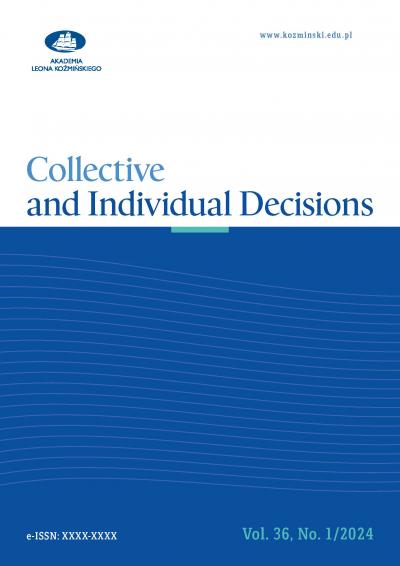Dowodzenie hipotez za pomocą czynnika bayesowskiego (bayes factor): przykłady użycia w badaniach empirycznych
Artur Domurat
Akademia Leona Koźmińskiego
Michał Białek
Akademia Leona Koźmińskiego
06/2016 (26) Decyzje
DOI 10.7206/DEC.1733-0092.79








